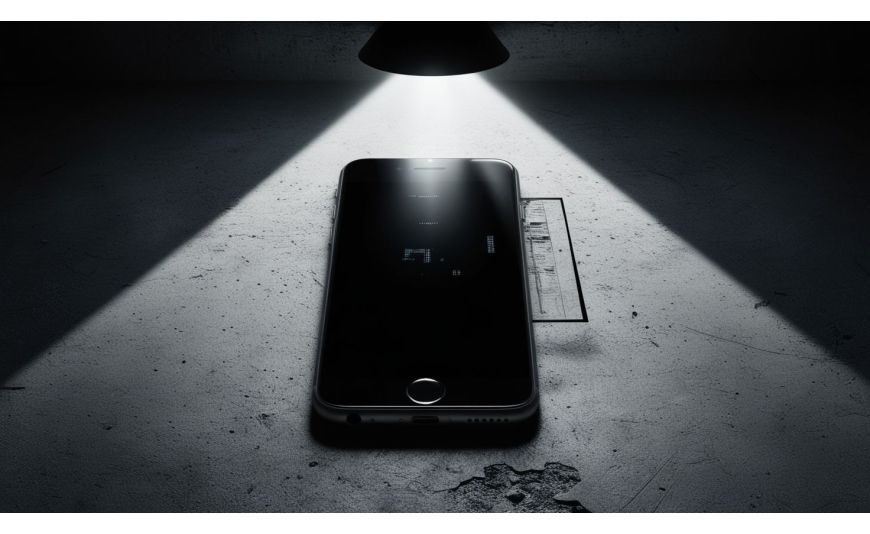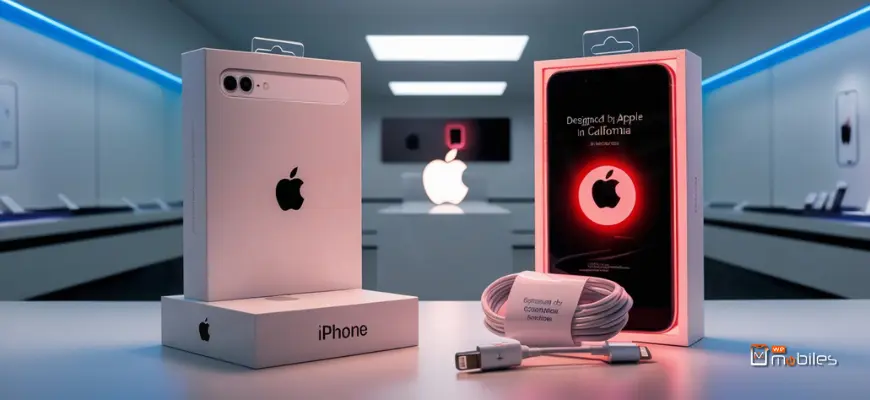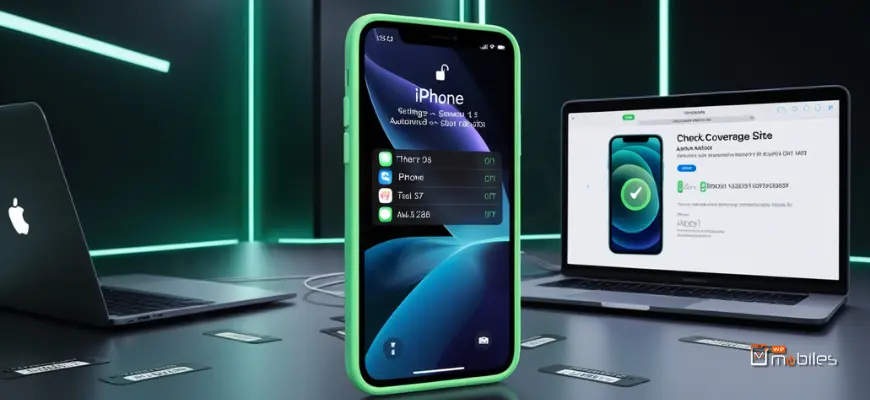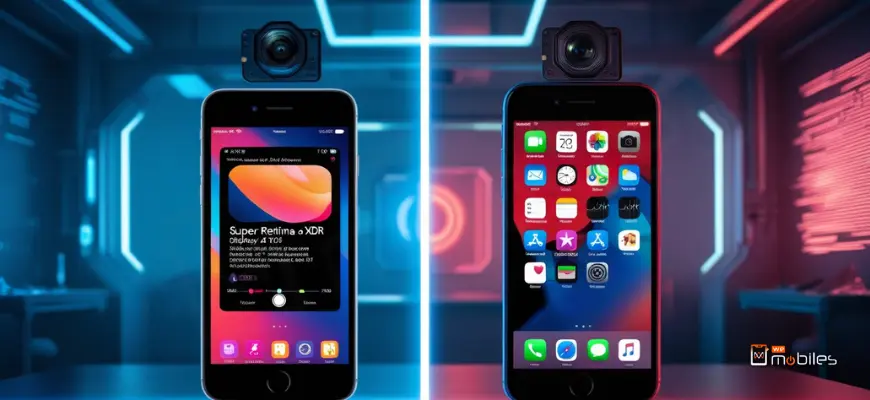The Ghost in the Machine: Is Your Prized Smartphone a Masterful Deception?

Table of Contents
- Introduction
- Targeting the King: Unmasking a Fake iPhone
- The Golden Numbers: IMEI and Serial Number Your First Line of Defense
- iOS Integrity Test: A Deeper Look
- Weight and Feel: Apple’s Premium Build
- Display & Camera Deception: Pixels Don’t Lie
- The Connection Test: iTunes/Finder Recognition
- Accessories & Packaging: The Devil in the Details
- The Price Anomaly: If It’s Too Good to Be True
- Beyond iPhones: Spotting Fake Android and Other Smartphones
- Your Action Plan: What to Do If You Suspect a Fake
- The Safest Path: Where to Buy
- Conclusion: Vigilance is Your Best Security
Introduction
You saved up for months, read endless reviews, and finally unbox the glossy flagship phone the ads promised you. Yet as its screen lights up, an awkward question flits through your mind: Am I actually holding the real thing, or just a polished fake that fooled even me?
In the age of global supply chains, really convincing knock-offs show up in online marketplaces almost overnight, sporting the same logo, colour, and even the familiar startup jingle. These digital doppelgangers are more than fun novelties; they typically ship with outdated software, hidden spyware, and patchy parts that can drain your bank account and your privacy. Buying one turns a personal device into an open door for thieves, and the only winner is the seller who vanished before you clicked purchase.
The encouraging part is that no copycat is perfect, and every clone leaves unmistakable fingerprints if you know where to look. This guide walks you through checking the world’s most-copied phone, the iPhone, yet the same habits safeguard any Android or budget model, so your hunt for the genuine article starts here.

Targeting the King: Unmasking a Fake iPhone
Few electronic devices attract desire as strongly as the iPhone, and few imitations flood the market as persistently. Counterfeiters invest staggering resources into copying Apple’s sleek hardware and smooth interface, yet obvious technical errors lurk beneath the glossy exterior.
Knowing where these errors hide can help any user spot a fake:
The Golden Numbers: IMEI and Serial Number Your First Line of Defense
Every iPhone carries two identifiers that cannot be duplicated: the IMEI (International Mobile Equipment Identity) and the Serial Number. Checking these codes remains the surest, simplest method to confirm a device’s lineage.
- Locate the Numbers:
- On the Phone: Open Settings, then General, then About, and scroll until both the Serial Number and IMEI appear.
- Quick Dial: Launch the Phone app and dial *#06#. The IMEI materializes onscreen in seconds.
- On the SIM Tray: Many models have the IMEI printed on the edge of their SIM-card holder, though the text may be small.
- Original Packaging: Finally, the box’s RFID label lists both the Serial Number and IMEI alongside other factory details.
- Verify with Apple: Head to Apple’s Check Coverage site, enter the codes, and read the official report. Enter the serial number in Apple’s online validation page. When that number belongs to a real device, the site reveals the model, original purchase date, active warranty range, and current technical-support window. If the number fails, disappears, or throws an obvious error, run away fast.
Next, check the IMEI printed on the box, then compare it with the one under Settings, and, where available, look at the number etched in the SIM tray too. Every single string of digits must line up exactly. Inconsistency signals trouble, because counterfeit phones often borrow cloned, random IMEIs that no official registry ever records.

iOS Integrity Test: A Deeper Look
More than a slick finish, software is usually the dead giveaway. Real iPhones are locked to Apple’s iOS; counterfeit models almost always slip Android underneath a thin skin that pretends to be Apple’s system.
- Take the App Store test: Tap its familiar green icon. Authentic gear goes straight to Apple’s official App Store. Counterfeits redirect you to a disguised Google Play, sketchy ad-laden shop, or bail out entirely. Search for an Apple-only app, GarageBand or Pages for instance; if it doesn’t appear, assume the worst.
- Activating Siri: Begin by saying “Hey Siri” aloud or by pressing and holding the power button for two seconds. If nothing happens and a generic assistant takes over, you are likely holding a counterfeit.
- Checking for Updates: Open Settings, tap General, then select Software Update. A genuine iPhone contacts Apple’s servers and suggests the latest iOS without delay. A fake may report no updates, freeze during the attempt, or begin downloading software from an unknown source.
- Examining the Settings Menu: Although scammers copy most screens closely, small inconsistencies truncated headings, missing toggles, odd wording can reveal the fraud. Side-by-side comparison with a friend’s real device often shows these details.
Weight and Feel: Apple’s Premium Build
Apple insists on premium glass and aerospace-grade aluminum that impart a reassuring heft.
- Weight and Dimensions: Real iPhones follow strict measurements and mass because they use dense materials. Counterfeits, trying to cut costs, usually feel much lighter or a fraction thicker. Compare what you hold against public technical specs.
- Buttons and Switches: Legitimate power, volume, and mute controls slide with confidence, sit flat along the chassis, and sound a firm click. Pirate models typically offer soft, wobbly, out-of-line replacements that scream corner-cutting.
- Apple Logo: On an authentic iPhone, the Apple logo on the rear sits flush with the glass and is usually laser-etched or inserted so cleanly you can hardly feel a seam. A counterfeit, by contrast, might have a raised edge, look smudged, show strange colors, or even feel like a sticker that someone popped onto the case. Some older replicas even featured a mirror-like logo that reflected light awkwardly.
- Build Seams & Finish: Snake your finger along the perimeter of the phone. A genuine device shows no gaps along the edge and the paint lines are razor straight. Most fakes, however, reveal tiny openings, ragged edges, or spots where the finish dulls or nearly peels away.
Display & Camera Deception: Pixels Don’t Lie
Screen and camera quality can make-or-break a phone’s identity.
- Screen Quality: Real iPhones use a cutting-edge Retina, or Super Retina XDR, panel that delivers pin-sharp text, daring colors, deep blacks, and virtually distortion-free angles. Knockoffs fit cheaper LCDs, leaving users with washed-out whites, jittery brightness, and whole regions of backlight bleed.
- Camera App & Quality: Open Camera in a legit iPhone and the interface glides, showing every mode Portrait, Cinematic, Slow-Mo, and more with zero lag. On a clone, the app freezes, key options vanish, and photos come out blurry, grainy, or oddly tinted, especially once the sun drops behind a building.
- Flash Test: Genuine iPhones fire a short, crisp burst of daylight-warm, well-aimed light. Counterfeit phones usually pack weak bulbs that flicker or shine in sickly blue or jaundiced yellow.

The Connection Test: iTunes/Finder Recognition
When a computer is nearby, checking the device’s connection is quick and reliable. Use a Lightning cable to link the iPhone, then open Finder on a Mac or the iTunes/Devices app on a Windows PC. A legitimate iPhone will appear by name, ready to back up and sync, whereas a counterfeit may show as an undeclared gadget or not show at all.
Accessories & Packaging: The Devil in the Details
Fraudsters usually pay little attention to minor packaging details. Apple ships its phones in rigid boxes featuring sharp, high-res artwork, clear fonts, and perfectly aligned serial stickers. By contrast, counterfeit packaging often bends under light pressure, displays faded prints or stray spelling mistakes, and has mismatched or missing serial numbers. Inside the box, genuine cables and adapters feel solid, coil neatly, and bear the words “Designed by Apple in California.” Cheap imitations, however, weigh almost nothing, have jagged seams, and fit too loosely in console ports. A true Lightning cable slides in firmly with a satisfying click every time.
The Price Anomaly: If It’s Too Good to Be True
This is usually the first red flag that pops up. When a new iPhone or even a fairly recent model shows up at a price well under what you’d expect perhaps 50 percent off or more you should question it right away. Apple devices tend to keep their resale value over time, so a steep discount almost always points to a scam.
Beyond iPhones: Spotting Fake Android and Other Smartphones
Looking beyond iPhones, many of the same ideas help spot counterfeit Android phones or other smart handsets. For any phone you consider, start with the IMEI check. Every genuine device has its own, and you can find it by dialing *#06# or heading to Settings and tapping About Phone. After that, visit one of the dozens of IMEI lookup sites, like imei.info, to see if the listed model, brand, and origin line up. If the information doesn’t match or the number comes back as invalid, chances are good the phone is fake.
- Hardware Verification Apps (Android): On an Android phone, look for trusted apps such as CPU-Z or AIDA64, and install them only after double-checking that the Google Play Store itself is real. These utilities pull detailed readings straight from the device, revealing data on the CPU, memory, screen resolution, and more, then stack that info against what the maker promised. Fake models often boast better numbers, and these apps will shine a light on the exaggeration. The Play Store even features dedicated “Fake Device Test” tools aimed squarely at uncovering altered firmware that hides the true specs.
- Operating System & UI: Open the home screen and ask whether the look matches exactly what the brand advertises Samsung One UI, Google Pixel UI, or whichever skin should be there. Are odd pre-installed icons present that you can’t drag away? Finally, can you pull down fresh software updates straight from the manufacturer’s servers, or does the menu seem blank?
- SIM Card Slot: Slide out the SIM tray and pay attention. Does it glide smoothly, fit flush, and click back with a reassuring snap? Are the ejector holes sharp and even instead of ragged? Counterfeits usually settle for flimsy plastic that bends or wobbles.
- Functional Checks: Give every single feature a workout. Pair a Bluetooth speaker, track a jog with GPS, swipe a transit card with NFC, unlock the screen by touch and by face. Blast music to test speakers and record a short clip to hear the microphone. Examine every camera regular, wide, ultra-wide, and telephoto. If anything that was promised stutters, freezes, or is simply missing, pay close attention; it may be a warning sign.
Your Action Plan: What to Do If You Suspect a Fake
- Stop the Purchase: If you are still in checkout, close the window or walk away. Do not complete payment.
- Contact Seller or Platform: If the transaction went through, reach out to the seller and also notify the marketplace eBay, Amazon, or whatever site hosted the deal. Attach all photos, messages, and copies of receipts.
- Seek Expert Verification: If doubt lingers, bring the gadget to an official service center for the brand. For an iPhone, for example, visit an Apple Store or an Apple-authorized repair shop.
- Report the Fraud: Think about filing a complaint with your local consumer watchdog or even your police department.
- Reflect and Learn: Losing money hurts, but channel that frustration into sharper attention next time you shop online.
The Safest Path: Where to Buy
The surest way to dodge fakes is to buy straight from:
- Official Brand Stores: Apple Store, Samsung Experience Store, or similar outlets.
- Authorized Retailers: Major electronics chains named as official brand partners.
- Reputable Carriers: Your regular mobile network provider.
When purchasing second-hand, keep your guard up. Meet in a crowded place, run every test described above, and, if possible, insert your own SIM card before parting with cash.
Conclusion: Vigilance is Your Best Security
Smartphones are sleek, convenient, and nearly indispensable, yet that popularity attracts operatives who profit from imitation. Learn to recognize the characteristic flaws of fake iPhones or any counterfeit phone and you shift from likely target to confident consumer. The ability to separate real from phony rests largely with you. Remain watchful, listen to your gut, and make certain that the device you carry reflects engineering genius rather than the shadowy work of scammers.
We hope you found this article helpful. If you enjoyed it, please share it on social media. Have any questions or suggestions? Leave a comment to join the discussion.
#Tags
Post a Comment
You must be logged in to post comments

0 Comments